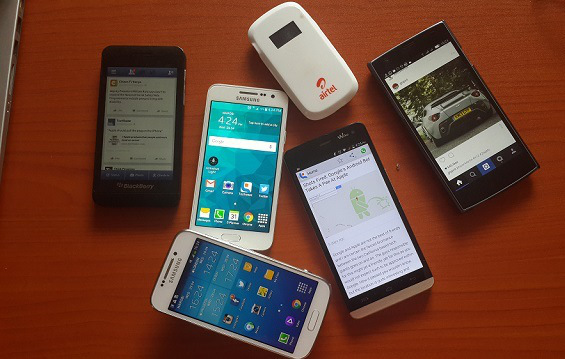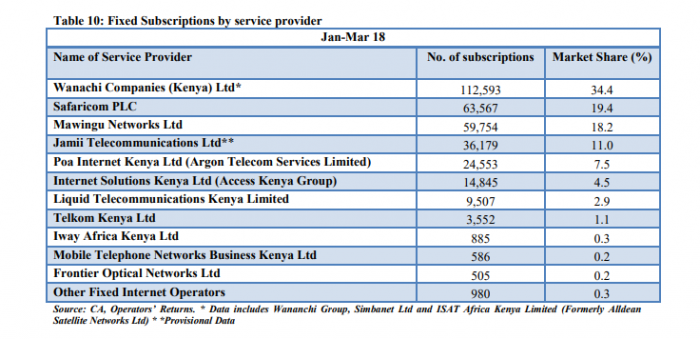The Communications Authority of Kenya recently released their statistical report about the industry’s performance for the January-March 2108 quarter. It is filled with some interesting tidbits like the MPESA one and there is still some more that i’ve highlighted below.
Mobile subscriptions hits new milestone
Starting with mobile subscription, CA are reporting that mobile penetration in the country has hit 95%. Between January and March of 2018, the number of mobile subscriptions grew by 3% from 42.8 million to 44.1%, where as a result, the mobile penetration is now at 95.1%, up from 94.3%
The share amongst the telcos is largely unchanged. Safaricom has 67% market share of the mobile subscriptions, Airtel is next with 19.7% (grew by 2.5%) and Telkom is now at 8.6%, down 0.4%
Data subscriptions
In the period reviewed, data subscription grew rather well (8.2%) from 33.3 to 36.1 million the previous quarter. CA attributes this due to the growth in deployment of 4G by three MNOs (Mobile Network Operators) and one ISP.
When it comes to fixed data subscriptions, Wananchi Companies (which owns Zuku) still has the largest market share with 34.4%. Safaricom is next with 19.4% market share and Mawingu Networks is third with 18.2%. Wananchi Companies still dominates this market but there is still room for growth for the other players to serve fixed data subscriptions for home and office.
Cyberattacks
Another interesting revelation is the national cyber threat landscape section of the report. During the quarter, the National KE -CIRT/CC (Computer Incident Response Team) detected over 7.9 million cyber threats. That sounds like a lot, but it was a 25.5% decrease from the 10.7 million ones detected the previous quarters
The National KE-CIRT/CC attributes the decline to “enhanced response to cyber threat advisories” and the measures deployed prevented the recurrence of some attacks.
There are several cyber threats that were detected by the National KE-CIRT/CC. The bulk was malware attacks then web application attacks, Botnets, system misconfiguration, online abuse and online impersonation.
From the table, we see a general decline of attacks with the highest being online impersonation (down 76.5%). However, the biggest change upwards was online abuse where it grew 1155% compared to the previous quarter (from 140 to 1757 cases).





















